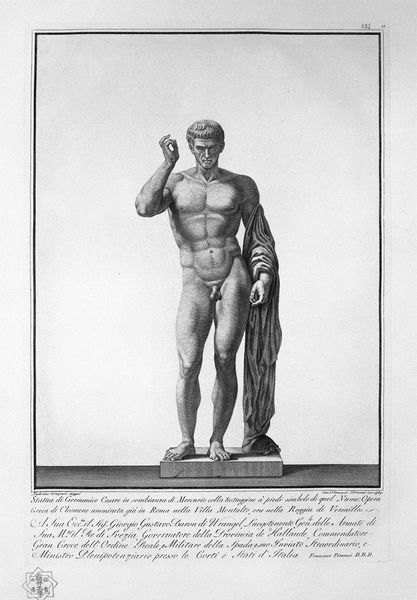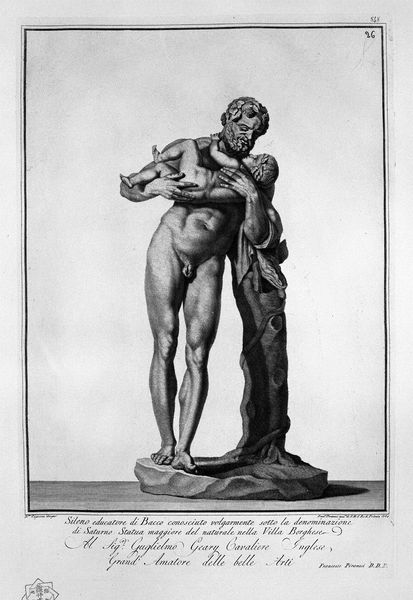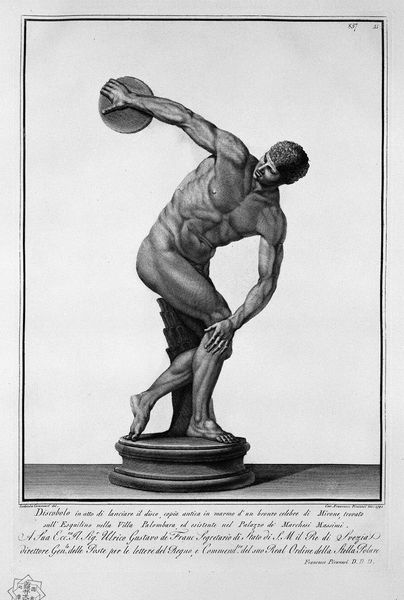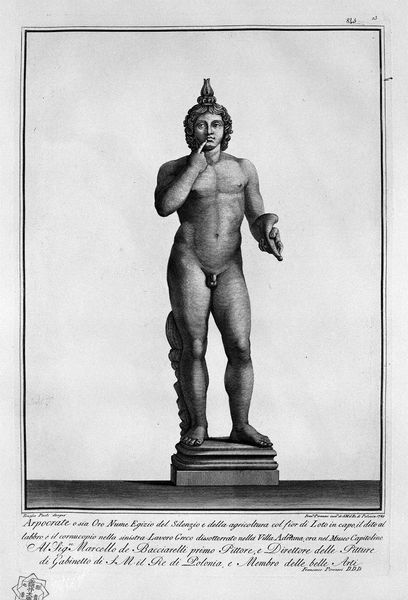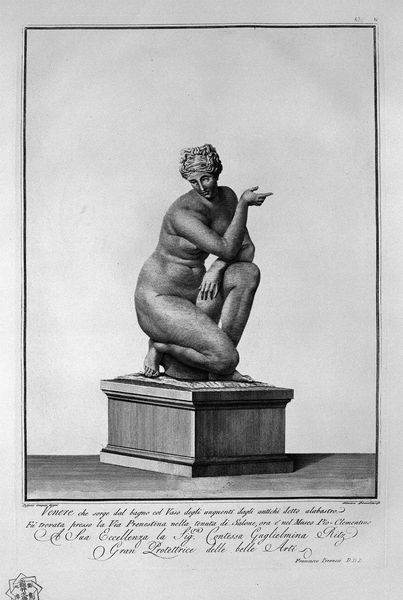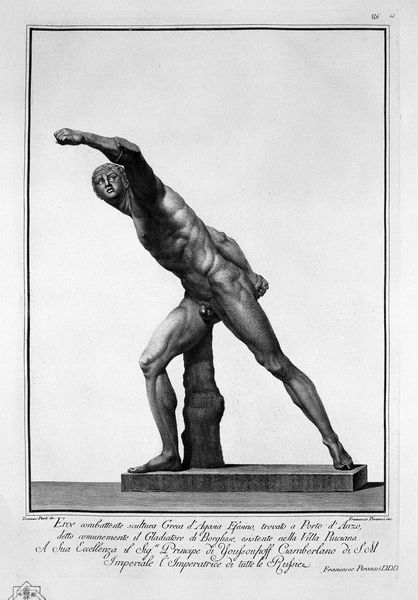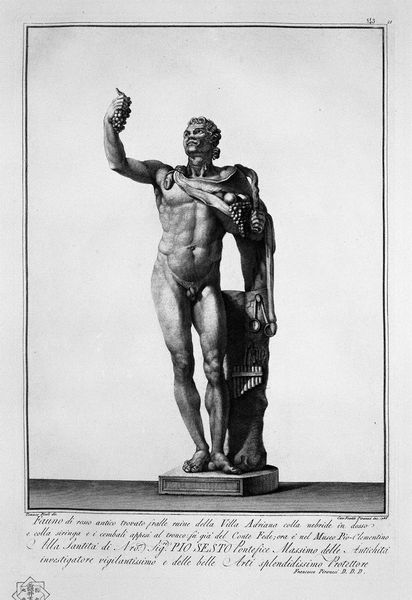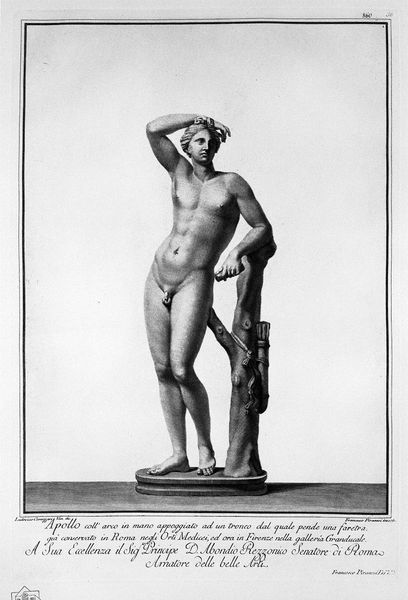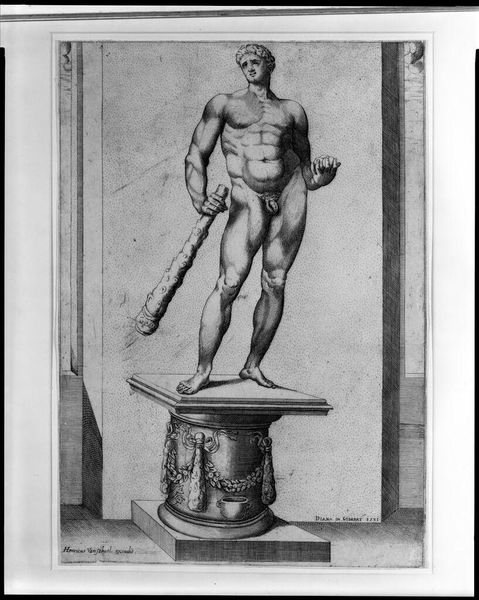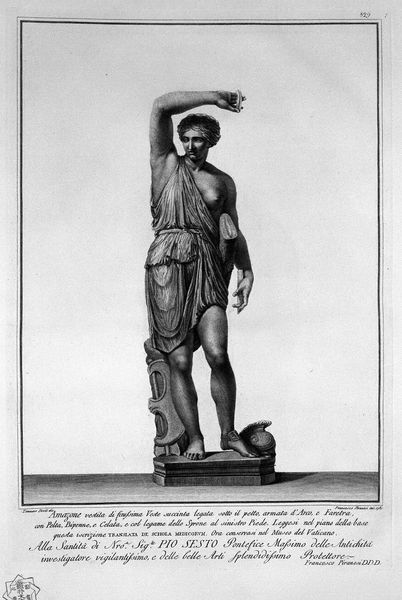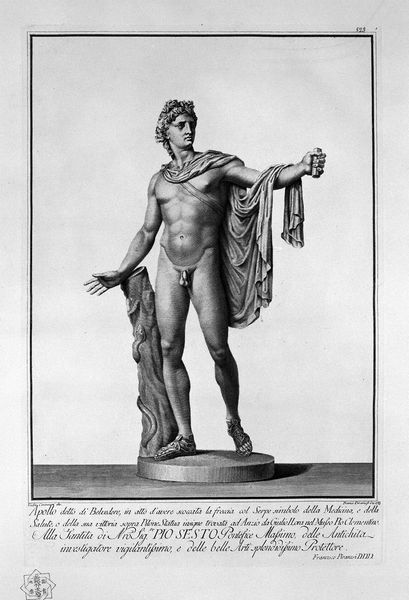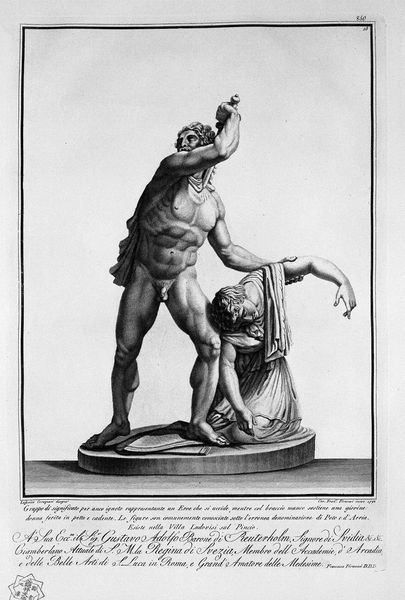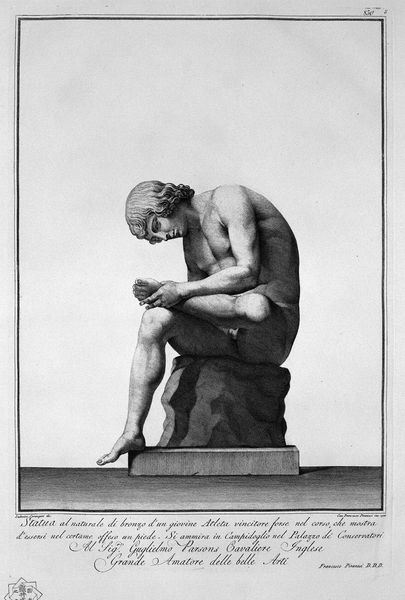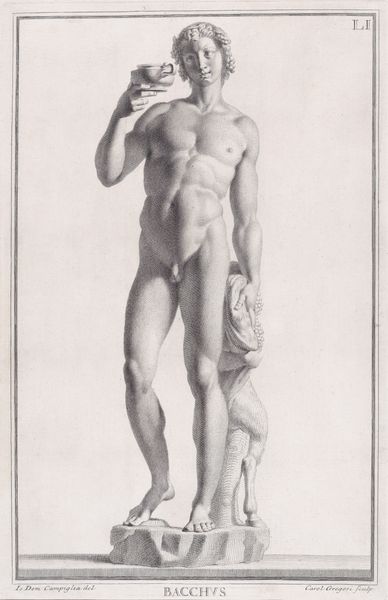
print, engraving
#
neoclacissism
#
statue
# print
#
greek-and-roman-art
#
figuration
#
form
#
men
#
line
#
history-painting
#
nude
#
engraving
Copyright: Public domain
Editor: So, here we have "Hermes" by Giovanni Battista Piranesi, an engraving of a classical statue. I find the stark lines and monochrome palette really striking; it gives it a sense of severity, almost like a document. How do you interpret this work? Curator: This print offers an entry point into examining the role of classical ideals in shaping political and social discourse. Piranesi was working during a time of rising nationalism, and his intense focus on Roman antiquity served not just aesthetic interests. Have you considered how the focus on the male nude connects with ideas of power and citizenship within this context? Editor: I hadn't thought about that specifically. I mean, I recognized the classical influence, but not necessarily in the political way you described. It’s more than just depicting beauty then? Curator: Precisely. The rediscovery and reinterpretation of classical forms in the 18th century were often used to legitimize particular forms of governance and social hierarchies. The idealized male form, like that of Hermes, embodied notions of rationality, strength, and civic virtue. In that light, how do you see its relevance to gender dynamics and the exclusion of women from political life at the time? Editor: That’s a powerful point. So, it is almost propaganda using classical ideals? Curator: It prompts us to interrogate how art can both reflect and reinforce social power structures. How we interpret figures like Hermes now involves unpacking these complex layers. Editor: This has completely changed my understanding! It's fascinating how much context informs a piece like this. Curator: And that critical examination can lead to a broader awareness of contemporary intersections of identity, gender, and political power.
Comments
No comments
Be the first to comment and join the conversation on the ultimate creative platform.
